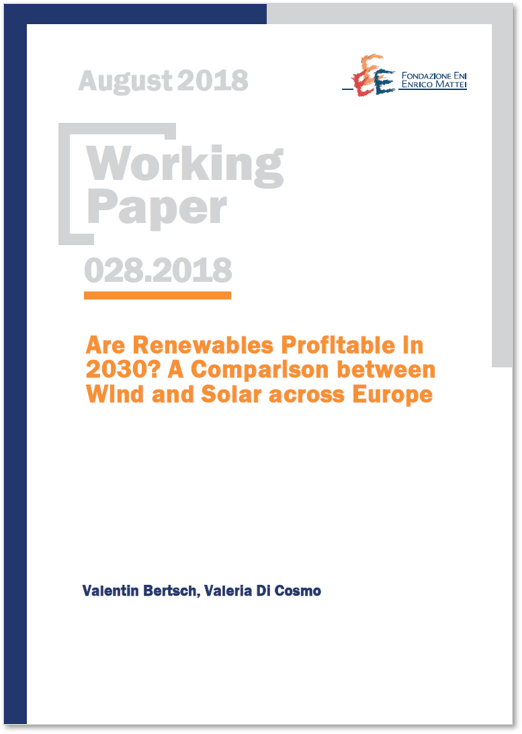This working paper analyzes the market-based profitability of three renewable electricity generation technologies—solar PV, wind onshore, and wind offshore—across Europe in 2030. It responds to the EU’s climate and energy targets, particularly the ambition of achieving 49% renewable electricity (RES-E) share by 2030. The analysis simulates a fully integrated European electricity market using the Artelys Crystal Super Grid model and evaluates profitability using the Internal Rate of Return (IRR), focusing on technology and regional differences.
Key Technologies & Innovations
-
Wind Onshore: Found to be generally the most profitable technology in Northern and Western Europe, such as in Scandinavia, the UK, and parts of Central Europe. Its profitability is more stable across varying assumptions (e.g., fuel prices, lifetimes).
-
Solar PV: More profitable in Southern and Southeastern Europe, especially in Italy, Malta, Greece, and Portugal. Profitability strongly depends on declining technology costs and high solar irradiation. A major sensitivity driver is the assumed decrease in capital costs—if these materialize, solar PV becomes viable in most EU countries by 2030.
-
Wind Offshore: Not profitable under baseline assumptions, even with cost reductions. IRRs remain negative in most countries unless significant cost reductions (to €2000/kW) and higher capacity factors are realized. This points to a continued need for financial support for offshore projects.
The study links technology costs (especially capital expenditure) and natural resource availability (solar irradiation, wind speeds) directly to profitability. It also underlines that solar PV investments are more sensitive to capital cost reductions, while wind onshore investments are less affected by cost uncertainty.
Key Findings
-
Profitability is not uniform across Europe. Investments that are profitable in some countries (e.g., wind in Denmark) may not be viable in others (e.g., wind in Bulgaria).
-
In the absence of subsidies, solar PV and wind onshore are profitable in many regions, while wind offshore generally is not.
-
Four regional categories emerge:
-
Northern/Western Europe: Profitable wind onshore, unprofitable solar PV.
-
Southern Europe: Profitable solar PV, mixed for wind.
-
Central Europe (e.g., Luxembourg, Lithuania): Low profitability for all three technologies.
-
Coastal Southern Europe: High profitability for both solar PV and wind onshore.
-
-
Policy Implication: EU-wide cooperation (e.g., renewable certificate trading) is more cost-effective than nationally siloed target achievement. Nations with less favorable renewable conditions could import from those with abundant resources.
Sensitivity Analyses
-
Fuel Price Variations: Higher fuel prices increase profitability across all technologies. Solar PV’s IRR rises by ~4%, wind onshore by ~4.5%, wind offshore by ~3.5%.
-
Technology Cost Assumptions: Cost reductions drive profitability, especially for solar PV. For wind offshore to be marginally profitable, costs must halve.
-
Lifetime Assumptions: Extending asset lifetimes to 25–30 years slightly increases IRRs (~1–1.5%). Reducing lifetimes lowers IRRs by 2–4%.
Policy and Investor Perspective
-
Policy Recommendations:
-
Encourage cross-border cooperation to leverage regional resource advantages.
-
Target financial support where technologies are unprofitable but necessary.
-
Account for public acceptance in deployment strategies, especially for wind.
-
-
Investor Insights:
-
Solar PV may be viable for households even if utility-scale profitability is marginal.
-
Wind Onshore is the most robust investment across multiple countries.
-
Wind Offshore needs significant cost improvements or subsidies.
-
The paper emphasizes the importance of differentiated strategies that align technology, geography, and investor type. It contributes valuable insights for both policymakers and private investors considering the economic landscape of renewables in a post-subsidy European energy market.

